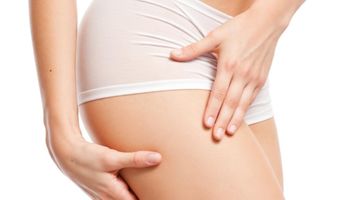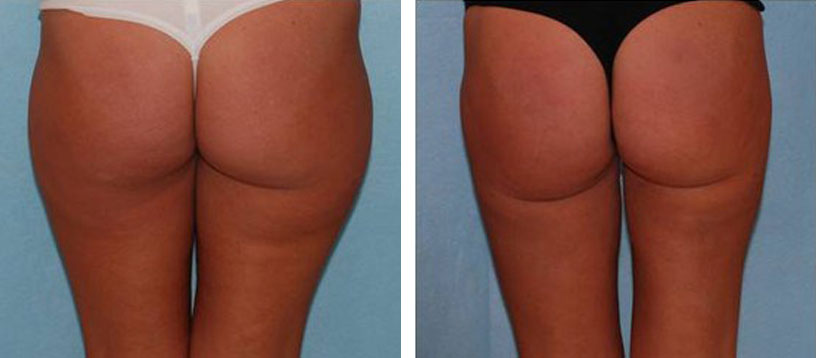Thigh Lift in Nepal
Search and Compare the Best Clinics and Doctors at the Lowest Prices for Thigh Lift in Nepal

Find the best clinics for Thigh Lift in Nepal
No clinics available
Turkey offers the best prices Worldwide
Price: $ 758

- Home
- Nepal
WHY US?
At Medijump, we're making medical easy. You can search, compare, discuss, and book your medical all in one place. We open the door to the best medical providers worldwide, saving you time and energy along the way, and it's all for FREE, no hidden fees, and no price markups guaranteed. So what are you waiting for?

Free

Best Price

Widest Selection

Risk-Free
What you need to know about Thigh Lift in Nepal

Thigh Lift, also known as thighplasty, is a cosmetic surgery to improve and reshape the appearance of the thighs by reducing excess skin and fat. The goal of a thigh lift is to contour your thighs so that they look in proportion with the rest of your body as well as to eliminate sagging skin due to aging, pregnancy, or significant weight loss. If you want your thighs to be more youthful-looking or proportionate to your body image, and fitness and weight control have not worked for you, then you can consider this procedure.
What Does the Procedure Involve?
A thigh lift is performed under general or epidural anesthetic. Your surgeon may create an incision in the groin area, then they may remove excess skin and fat. After that, your surgeon reshapes and tightens the underlying tissue, and the remaining skin is smoothed, lifted, and stitched into place at the incision site. Your doctor may also combine the procedure with liposuction.
How Long Should I Stay in Nepal for a Thigh Lift Procedure?
Since thigh lift is often performed as an outpatient procedure, you should be able to leave the hospital on the same day of the surgery. However, the recommended total length of stay in Nepal is about 14 days since your doctor needs to remove the stitches within two weeks following the surgery.
What's the Recovery Time for Thigh Lift Procedures in Nepal?
You can expect to go back to work within 7 to 10 days after your surgery, but the full recovery period until you can resume physical activity may take about 4 to 6 weeks. Since the recovery period can vary from one person to another, make sure to ask your doctor about your recovery timeline, including when you can start doing intense exercise, heavy lifting, and other vigorous activities.
What sort of Aftercare is Required for Thigh Lift Procedures in Nepal?
You will be given specific instructions regarding medication, wound care, diet, and exercise. You will likely need to attend a follow-up checkup with your plastic surgeon to monitor your healing progress. After you are fully healed, it is important for you to follow a healthy diet, have regular exercise, and maintain a healthy weight to retain the result of your thigh lift.
What's the Success Rate of Thigh Lift Procedures in Nepal?
A thigh lift is generally safe and the success rate is high. However, you need to be aware that the procedure has some side effects and risks, such as poor wound healing, infection, bleeding, seroma, asymmetry, deep vein thrombosis, skin loss, persistent pain, skin discoloration, numbness, recurrent looseness of the skin, and allergic reaction to the anesthetic.
Are there Alternatives to Thigh Lift Procedures in Nepal?
If you do not like the idea of undergoing surgery or you are not an ideal candidate for the procedure, you may want to consider the alternatives, including liposuction, Vaser liposuction, and laser skin tightening. Consult with your plastic surgeon about which procedure is better for your situation.
What Should You Expect Before and After the Procedure
Before a tight lift, your thighs may look dimpled, saggy, and flabby. You may not feel confident about the appearance of your thighs because they are not proportionate to your body image. After the procedure, you can immediately see a positive change to your thighs. Your thighs will look more youthful and firmer.
Whilst the information presented here has been accurately sourced and verified by a medical professional for its accuracy, it is still advised to consult with your doctor before pursuing a medical treatment at one of the listed medical providers
No Time?
Tell us what you're looking for and we'll reachout to the top clinics all at once
Enquire Now

Popular Procedures in Nepal
Prices Start From $26

Prices Start From $113

Prices Start From $931

Prices Start From $275

Prices Start From $76

Prices Start From $5

Recommended Medical Centers in Nepal for procedures similar to Thigh Lift

- Interpreter services
- Translation service
- Religious facilities
- Medical records transfer
- Medical travel insurance
- Health insurance coordination
- TV in the room
- Safe in the room
- Phone in the room
- Private rooms for patients available

- Interpreter services
- Translation service
- Religious facilities
- Medical records transfer
- Medical travel insurance
- Health insurance coordination
- TV in the room
- Safe in the room
- Phone in the room
- Private rooms for patients available

- Interpreter services
- Translation service
- Religious facilities
- Medical records transfer
- Medical travel insurance
- Health insurance coordination
- TV in the room
- Safe in the room
- Phone in the room
- Private rooms for patients available

- Interpreter services
- Translation service
- Religious facilities
- Medical records transfer
- Medical travel insurance
- Health insurance coordination
- TV in the room
- Safe in the room
- Phone in the room
- Private rooms for patients available
Thigh Lift in and around Nepal
Introduction
Nepal is a country in South Asia, sandwiched between India and China. Home to the mighty Mount Everest, this incredible country has diverse landscapes, from the Himalayan Mountains in the north to the sprawling plains in the south. Towering mountains, charming hill villages, golden mountains, and jungle wildlife, Nepal is truly one of the world’s best travel destinations. Beyond its nature and culture, this country is also increasingly popular for its healthcare. With its affordable high-quality medical facilities, Nepal is considered to have immense potential for medical tourism, due to the availability of good infrastructure, highly trained specialists, modern medical equipment, and relatively cheaper medical treatment. In fact, it’s currently the fastest-growing segment of the country’s tourism. Medical tourists coming to Nepal are usually seeking exceptionally high medical treatment at competitive rates. Some of the most sought after procedures are dental treatments, cardiac services, and neurological treatments.
Popular Cities and Regions in Nepal
Kathmandu, the capital and largest city in Nepal, is historic, enticing, spiritual, and vibrant. One of the most famous attractions in the city is the old town, where tourists can find the most popular Tibetan pilgrimage site, the Kathesimbhu Stupa. Another top attraction is Kumari Bahal, which is the home of the Kumari, the girl who is selected to be the town’s living symbol of Devi. Tourists looking to relax in a more laid-back vibe usually go to Pokhara. Stretching along the shore of an idyllic lake, it offers spectacular scenery. It also boasts a thriving adventure-sports industry, from paragliding to paddle boats. Anyone who wants to experience an ancient way of life should visit Bhaktapur, which is filled with artisan weave cloths, amazing cuisine, and beautiful temples.
Transport in Nepal
The main international airport in Nepal is Tribhuvan International Airport, which serves flights to and from numerous cities in Asia, such as Delhi, Hong Kong, and Dubai. Getting around the country can be a challenge, but public transportation is available. Buses are affordable, however, they tend to be overloaded. Tourist buses are the best way to travel around as they are in good condition.
Visas in Nepal
Citizens of India do not need a visa to enter Nepal without restrictions. Citizens of almost all nations, including the US and all EU countries, can obtain a visa on arrival that is valid for up to 90 days. Only holders of passports from 12 countries, need to have a visa in advance.
Weather in Nepal
Nepal has five seasons. Spring starts in March until May, it offers pleasant weather that is not too cold nor too hot. Summer arrives in June and ends in August, bringing hot temperatures of around 28°C. Monsoon from June to September receives rain almost every day. Autumn and pre-winter bring sunny and pleasant weather, while winter can be very cold.
Additional Info
-
Local Currency: Nepali rupee (NPR) is the official currency. 1 USD converts to 115 NPR.
-
Money & Payments: ATMs are available in major cities, such as Kathmandu and Pokhara. Credit cards are accepted in major hotels and restaurants. Tipping is expected.
-
Local Language: The official language is Nepali. English is mainly spoken in tourism areas.
-
Local Culture and Religion: Hinduism and Buddhism coexist in Nepal peacefully. Islam, Kiratism, and Christianity are in the minority.
-
Public Holidays: Some of the most celebrated public holidays are Maha Shivaratri, Buddha Jayanti, Sambidhaan Diwas, and Bhaitika.
Popular Searches
- Plastic Surgery in Thailand
- Dental Implants in Thailand
- Hair Transplant in Thailand
- Breast Augmentation Thailand
- Gastric Sleeve in Thailand
- Gender Reassignment Surgery in Thailand
- Laser Hair Removal in Bangkok
- Botox in Bangkok
- Dermatology in Bangkok
- Breast Augmentation in Bangkok
- Coolsculpting in Bangkok
- Veneers in Turkey
- Hair Transplant in Turkey
- Rhinoplasty in Turkey
- Stem Cell Therapy in Mexico
- Rhinoplasty in Mexico
- Liposuction in Mexico
- Coolsculpting in Tijuana
- Rhinoplasty in Korea
- Scar Removal in Korea
- Gastric Sleeve in Turkey
- Bone Marrow Transplant in India
- Invisalign in Malaysia
- Plastic Surgery in the Dominican Republic
- Tummy Tuck in the Dominican Republic
- Plastic and Cosmetic Surgery in Poland
- Rhinoplasty in Poland
- Hair Implant in Poland
- Dental Implants in Poland
- IVF in Turkey